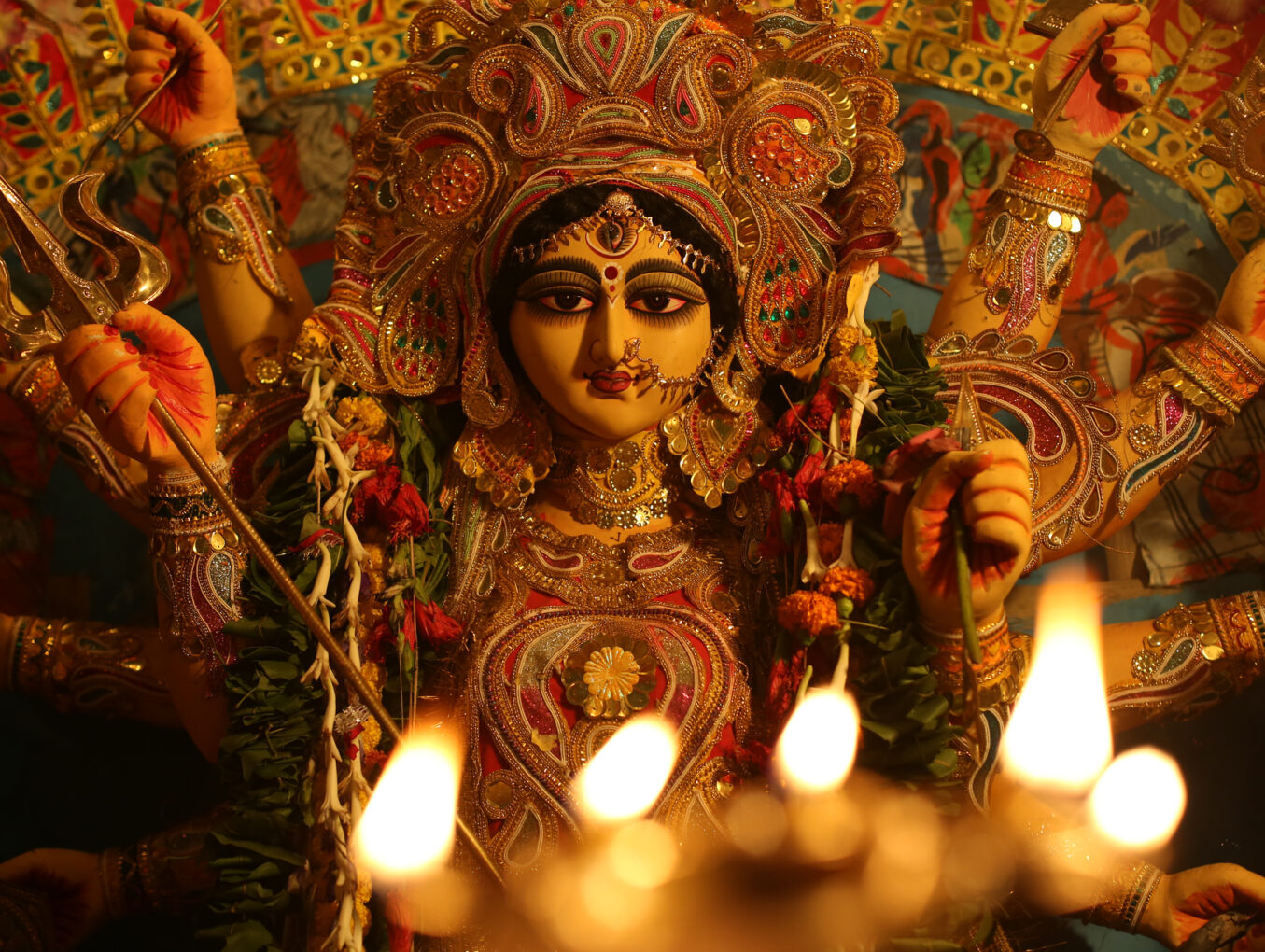Navaratri is an autumn festival, spanning 9 nights and ten days, that is devoted to worshipping the divine feminine in all her forms. Hindus celebrate Durga in the first three days, followed by Lakshmi, and then Sarasvati during the final third, with various offerings and rituals being performed in their honour. It usually falls in September or October.
Navaratri is celebrated in different ways in different locations. In the east and northeast of India, especially in Bengal and Assam, the festival is synonymous with Durga Puja, celebrating the goddess Durga’s victory over the demon Mahishasura and the victory of good over evil. On the day after the festival, called Dussehra or Vijayadashmi, clay figures of the goddess are taken to the river in processions and immersed in water to symbolise her returning home.
In the north of India, people are more likely to be celebrating Rama’s victory over Ravana, with performances enacting the story on elaborately decorated stages, feasts, visits to clay figures housed in temporary pandal structures and public group dances, like Garba in Gujarat. A lot of Hindus will also celebrate Navaratri by fasting during the day.
#Multiculturalbritain
Many countries with significant Hindu populations celebrate Durga Puja and Navaratri. There are small community celebrations in locations all over London like Camden, Hounslow and Wimbledon, as well as larger ticketed events featuring dancing and stalls selling traditional sweet treats and snacks. In 2006, Thames River authorities finally allowed the clay figure of Durga to be submerged, giving Hindus in the city the opportunity to observe all the rituals for the first time.
